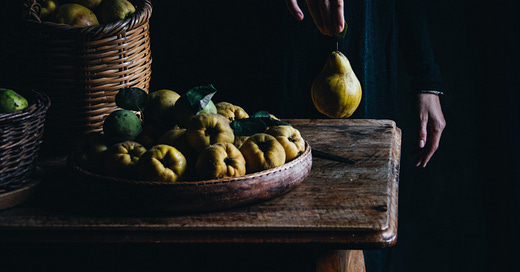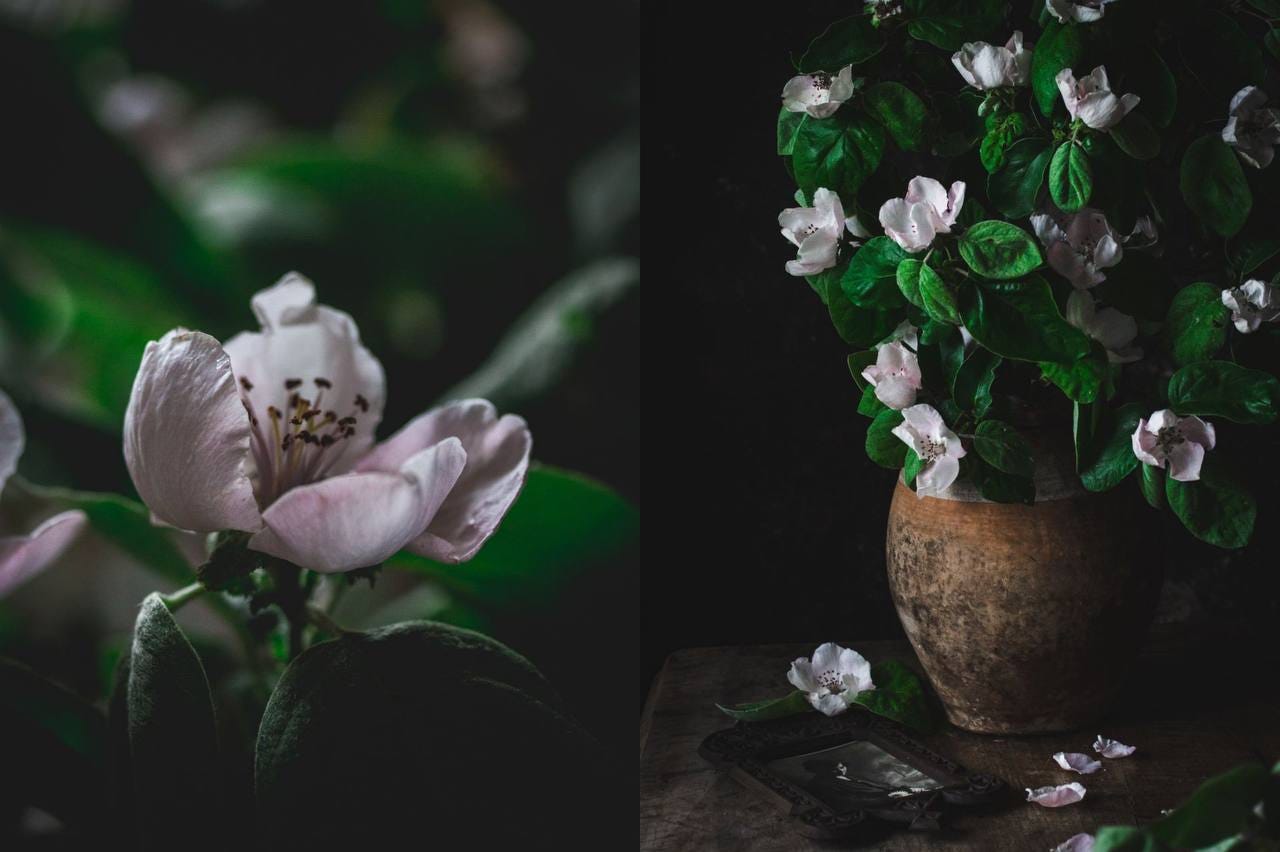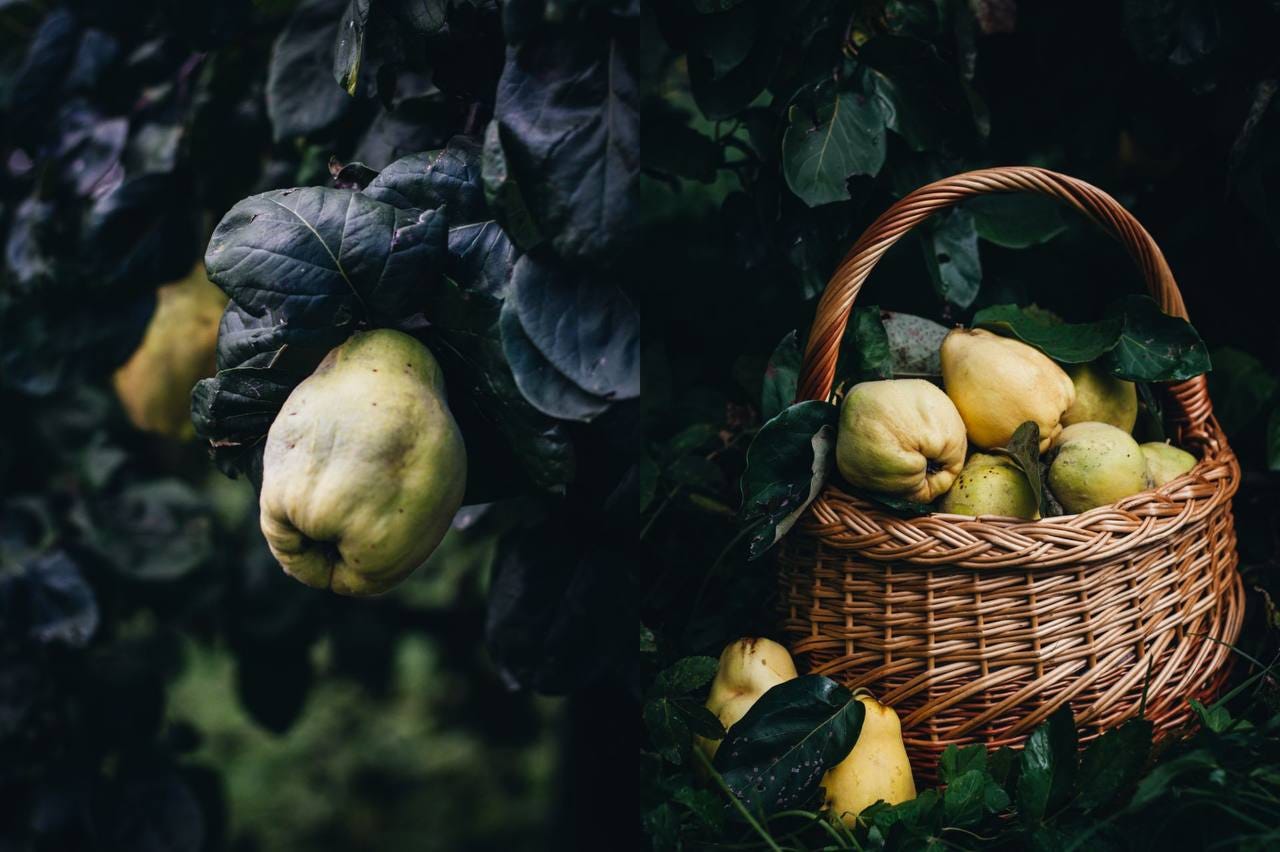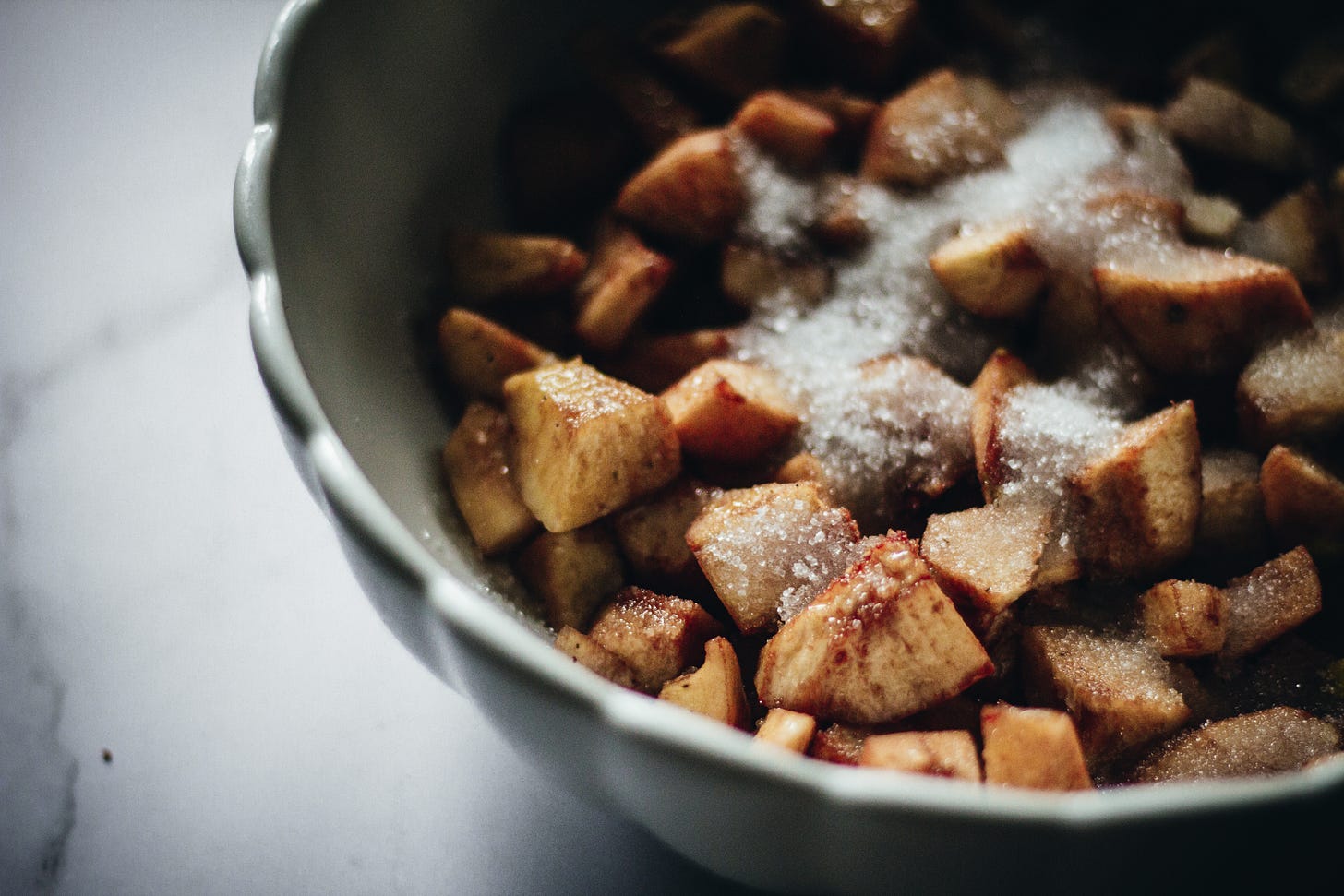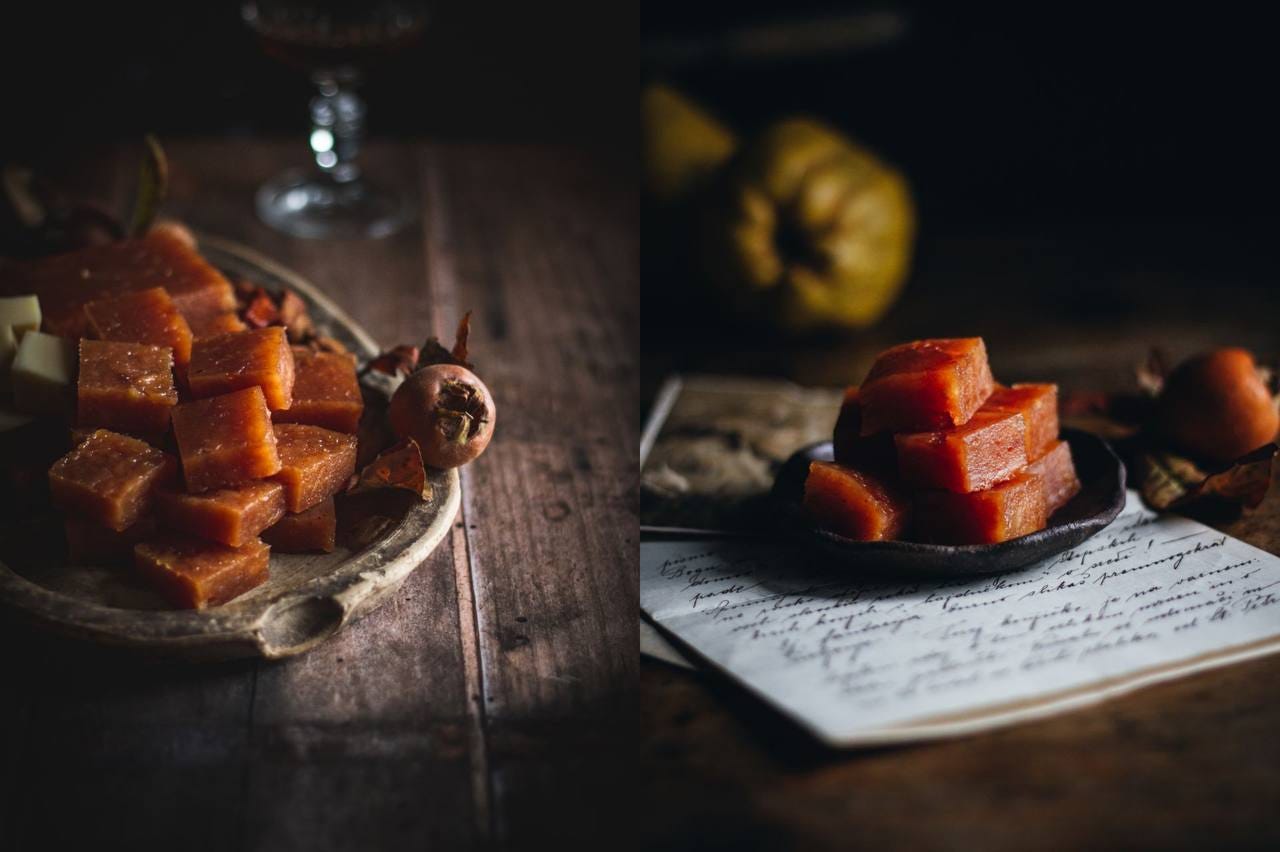The quince (Cydonia oblonga) is the sole member of the Cydonia genus of the Rosacea family, which includes roses, hawthorns, rose hips, apples, pears, almonds, and plums among many others. As the quince predates the apple, many believe that the forbidden fruit in the Garden of Eden was not an apple, but a quince. No wonder the quince is directly associated with love, fertility, and unity.
In the Middle Ages quince was cherished as a gift for wedding celebrations, which was offered to the bride to sweeten her breath before entering the bridal chamber. In the book 1001 Nights, one of the protagonists praises the quince as it ‘puts to shame the scent of musk and ambergris’:
”The quince combines all of the pleasures of mankind
It is more famous than any other fruit.
It has the taste of wine and the fragrance of musk,
Golden hued, and rounded like the full moon.”
A quince is shown as a gateway to love and a fulfilling relationship in the tree spirit wisdom. Quince also serves as a reminder to cherish those we love and who love us and not take them for granted.
It is said, that after a baby is born in the Balkans, a quince tree is planted as a symbol of life. I'm not sure if our forefathers planted a quince whenever a child was born, but I will forever be grateful for the beautiful quinces that thrive on the homestead. Even their large pink-white blooms in spring are a sight to behold.
Quinces are prized for their voluptuous golden appearance, intense aroma, flavor, and tartness. While some varieties (Aromatnaya, Kuganskaya) can be consumed raw, most are too hard and tart and require bletting or additional cooking. Due to their high pectin content, quinces are used to make jam, jelly, conserves, marmalade, paste, and pudding. A clear colorless spirit distilled from ripe fermented quinces known as “rakija od dunje”, is one of the most popular in the Balkans.
Quince's medicinal properties are nothing short of stunning. Rutin, quercetin, mannose, amino acids, fatty acids, phenols, enzymes, tannins, alkaloids, quinines, and essential oils are just a few of the active phytochemicals found in quince. Traditionally different parts of this plant have been used to cure respiratory disorders such as asthma, cough, and bronchitis as well as gastrointestinal and digestive issues like ulcerative colitis and irritable bowel syndrome. Research has shown that quince inhibits the growth of H. Pylori, a bacteria that causes stomach ulcers. Additionally, quince extracts demonstrated antioxidant, anti-allergic, anti-inflammatory, and anti-diabetic properties.
Membrillo (Quince Cheese)
Membrillo, also known as quince cheese or quince paste, is a firm, sweet reddish hard paste made from the quince fruit. Every fall, my grandma made a couple of baking trays of this delectable paste, which we ate all winter long. Did you know that marmelo, the Portuguese word for quince, is the origin of the name "marmalade," which originally referred to quince jam? It is commonly consumed with manchego cheese and is known as membrillo in the Spanish-speaking world.
Ingredients:
1kg of quince
500g of sugar
juice of 1 lemon
2 vanilla pods
1 spoonful of tasteless natural oil (for oiling the baking tray)
Preparation:
Ripe quinces should be peeled, pitted, and then sliced into smaller pieces. Place them in a sizable skillet, top with sugar, vanilla bean pods, and lemon juice, and leave overnight. The quince will macerate and release its juices, which will shorten the cooking time. The following day, put the saucepan on the fire. Allow it to boil for a few minutes while stirring constantly. Cook on moderate heat for at least 45 minutes, so the quince becomes darker, the liquid evaporates and the mass thickens. Stir constantly to prevent burning. Scoop a tiny spoonful of the mass and place it on a cold plate or put it in the refrigerator. The membrillo is cooked if it hardens and takes on a jelly-like appearance. Cook it longer if it's still soft after cooling. Check as often as required. Remove the membrillo from the fire once it has finished cooking. Oil a suitable baking tray with a neutral oil, for example, coconut oil, and spread the mass evenly on the baking tray. Wait for it to cool completely and put it in the refrigerator to harden completely. When it has hardened, carefully take it out of the tray and cut it into desired cubes. Serve as a dessert or as an accompaniment to a cheese board. It can be stored in closed containers in the refrigerator for several months.
Find more interesting quince recipes here.

